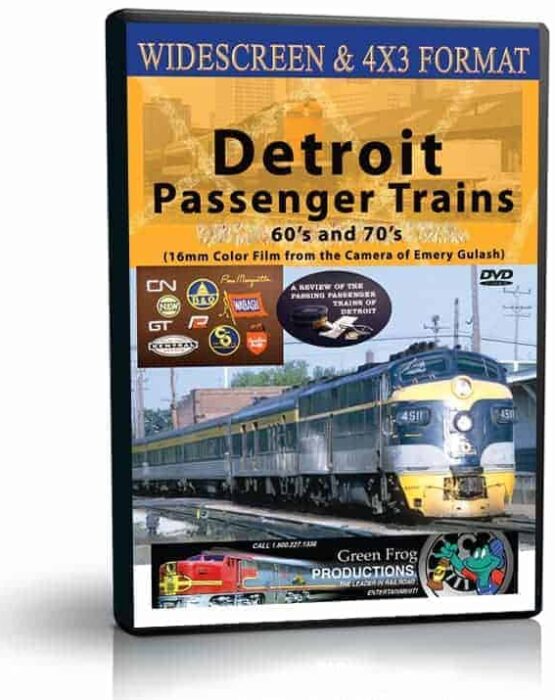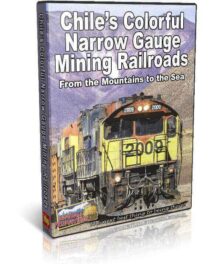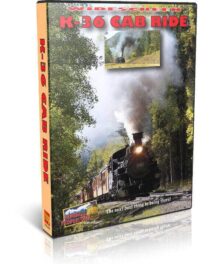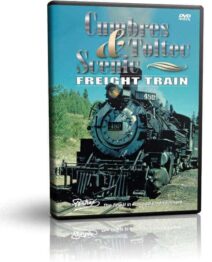Detroit Passenger Trains, 1960s & 70s
SKU: DVD-GF-20178Original price was: $29.95.$24.95Current price is: $24.95.
Detroit has a long history as a vibrant railroad city.
- Free Post Office shipping over $25!
- Free UPS shipping over $75!
| Producer | Green Frog Productions |
|---|---|
| Run Time | 48 minutes |
| Narration | Yes |
| Shrink Wrap | Yes, Brand New |
| Technical Details | No Region Code, NTSC |
Detroit has a long history as a vibrant railroad city. Nearly a half-century ago, when Emery Gulash shot these action scenes of passenger trains in and around Motor City, more than a half dozen major railroads served the area, most with their own distinctive passenger service, often with cars from different railroads in the same colorful train.
br>Today all of them are fallen flags, absorbed or merged into larger companies during the non-stop mergers of the 1960s and 1970s. Go back with us to that era for a real blast from railroading’s past. It was the Last Hurrah before the homogenization of passenger service nationwide by Amtrak.
br>This program includes footage of the following: B&O, C&O, Canadian National, Pere Marquette, N&W, Penn Central, Wabash, GT, NYC, Canadian Pacific, Budd Rail Diesel.







Lloyd –
Detroit, who would have thought that so many different railroads could operate passengers trains here? Detroit has no American neighbour to it’s east, and nothing much to the north very far either that would require passenger srevice. Yet, there were many companies operating here and lots of trains to see for railfans. Note: in the description, it says “Today all of them are fallen flags”. Remember, it is the passenger service that is fallen flags, not the freight service as a few of the freight lines are still there today. Anything I found with this video,,,, not long enough for what Detroit has (had) to offer.
Mwdonoughue –
This program showcases many passenger trains operating in and out of Detroit during the 1960s and 1970s, and some trains are seen operating with equipment from different railroads.